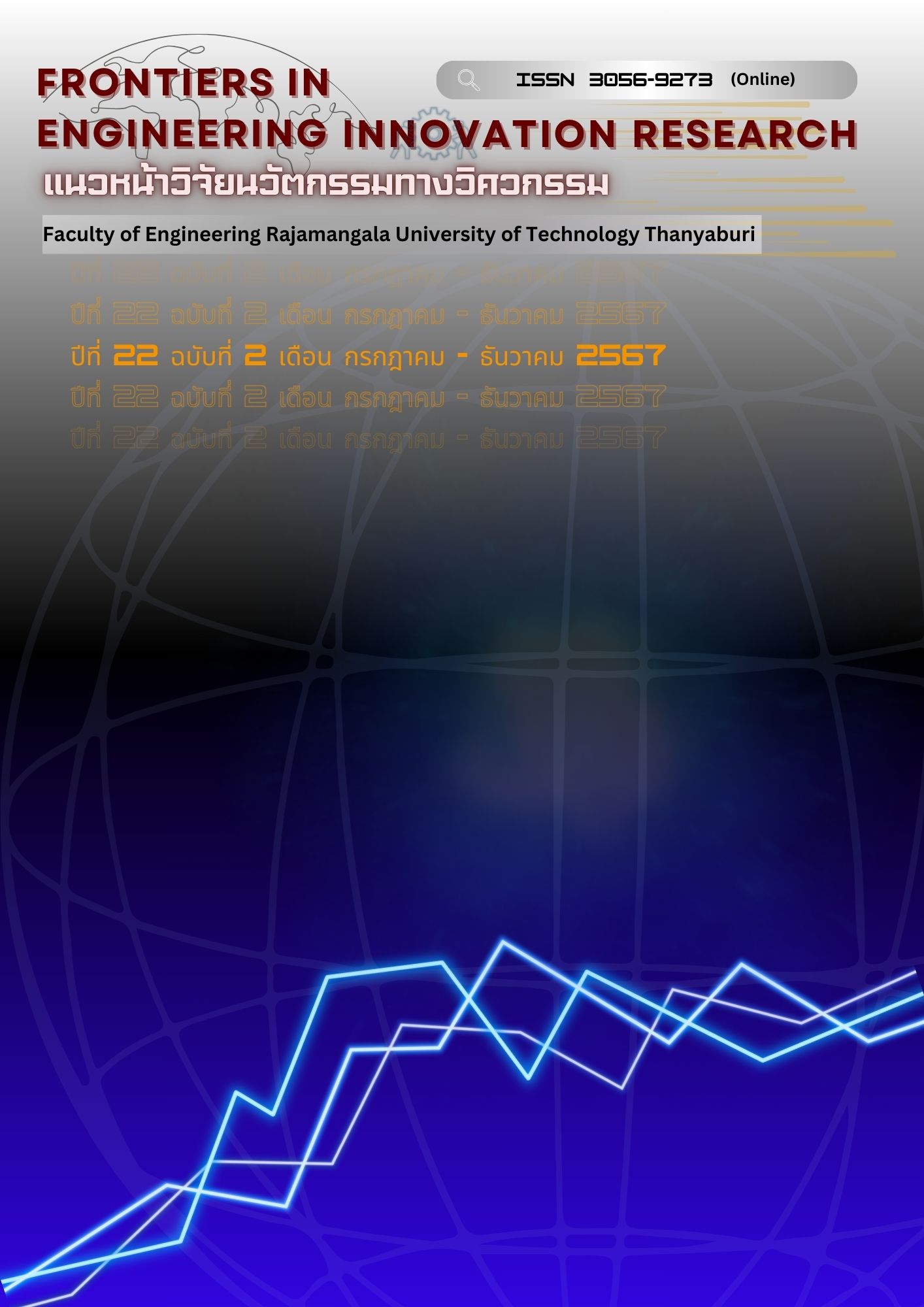Investigation of using blowdown of cooling tower to generate electricity
Main Article Content
Abstract
This paper reports an investigation of using blowdown of cooling tower to generate electricity. To this end, a small model of an electric power system was designed and assembled. Three micro hydro turbine generators available in the market were tested at flowrate ranging from 300 to 2000 liter/hour similar to blowdown of cooling tower from power plant. The vertical head of water supplied to the turbines was varied 1, 1.5, and 2 m. Experimental data indicated that impulse turbine generator type can generate electricity at a maximum flowrate of 1000 liter/hour, with a power output of 1.05, 1.07, and 1.15 watts at head of 1, 1.5 and 2 m respectively. Pelton turbine can generate electricity at a maximum flowrate of 1300 liter/hour, with a power output of 10.11, 10.37, and 10.4 watts at head of 1, 1.5 and 2 m, respectively. Finally, water wheel turbine can generate electricity at a maximum flowrate of 2000 liter/hour, with a power output of 0.57, 0.68, and 0.83 watts at head of 1,1.5 and 2 m, respectively. Under test conditions, Pelton turbine is the most suitable to produce electricity following the proposed concept. The research output can be used as a guideline for using blowdown of cooling tower from power plants to produce electricity.
Article Details

This work is licensed under a Creative Commons Attribution-NonCommercial-NoDerivatives 4.0 International License.
The manuscript, information, content, picture and so forth which were published on Frontiers in engineering innovation research has been a copyright of this journal only. There is not allow anyone or any organize to duplicate all content or some document for unethical publication.
References
Uchiyama T, Honda S, Okayama T, Degawa T. A feasibility study of power generation from sewage using a hollowed pico-hydraulic turbine. Engineering. 2016;2(4):510-7.
Bousquet C, Samora I, Manso P, Rossi L, Heller P, Schleiss AJ. Assessment of hydropower potential in wastewater systems and application to Switzerland. Renewable energy. 2017;113:64-73.
Division of environmental impact assessment development. Office of natural resources and environmental policy and planning. [Internet]. 2024 [cited 2024 Oct 17]. Availability From: https://eia.onep.go.th
Kaewrattanasripho P. Simulation of the generating lectricity from water turbines using the LabVIEW. Journal of Applied Research on Science and Technology (JARST). 2022;21(2):117-25.
Pornchaloempong P. Cooling tower. [Internet]. 2024 [cited 2024 Apr 19]. Availability From: https://www.foodnetworksolution.com//wiki/word/6132/cooling-tower-หอทำความเย็น
Wikipedia. Water turbine. [Internet]. 2024 [cited 2024 Aug 26]. Availability From: https://th.wikipedia.org/wiki/waterturbine
Cobb BR, Sharp KV. Impulse (Turgo and Pelton) turbine performance characteristics and their impact on pico-hydro installations. Renewable energy. 2013;50:959-64.
Walker T, Duquette J. Performance evaluation of a residential building-based hydroelectric system driven by wastewater. Sustainable Cities and Society. 2022;79:103694.
Williamson SJ, Stark BH, Booker JD. Low head pico hydro turbine selection using a multi-criteria analysis. Renewable Energy. 2014;61:43-50.


